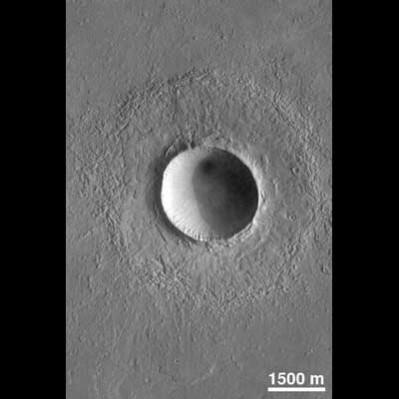
NASA's Mars Reconnaissance Orbiter (MRO) has found that the odds of a human colony on Mars being wiped out are quite high! MRO's analyses of Mars has proved that are many more impact craters on the Martian surface than previously thought.
Also Read: Stunning green Comet 45P set to fly by Earth: Date, time and where to watch
A lot of these impact craters are present around an area of Mars called Tharsis — an enormous volcanic plateau located in Mars' western hemisphere, near the equator. The region harbours the largest volcanoes in our solar system.
The reason why the Red Planet is hit by space debris with such frequency is that objects heading towards the planet's surface are not burnt-up due to the thin atmosphere, unlike Earth which is blanketed by a thick atmosphere that safeguards it from most meteorites and other space debris.
Mars' atmosphere is said to be 100 times thinner than Earth's. Due to this, Mars is more prone to being hit by space rocks. Though there are times when the atmosphere is dense enough to break up an incoming object, it merely causes the object to splinter into smaller pieces which hit the planet over a wider area.
This, however, has alarmed scientists working on building and testing human habitats for a future manned-mission to Mars. The habitats are pressurized and impacts (large or micro) could endanger the atmospheric integrity of the structure, thereby threatening the lives of astronauts or scientists living in these Martian habitats.

The MRO spotted its first impact crater using the Mars orbiter's Mars Context Camera (CTX). The crater is estimated to have formed somwehere between 2008 and 2014.
When researchers carried out a follow up of the same site on October 4, 2016 with the help of the Mars mission's High-Resolution Imaging Science Experiment (HiRISE) camera, they found two enormous craters along with 30 smaller ones scattered over a large area.
NASA's MRO has been analysing impact craters on the Red Planet in the hope of giving scientists more data to study how meteorite impacts affect the surface of the planet.
The scientists will also analyze the mineral content of the crater bottom exposed by the impact. The information will allow researchers to also learn more about Mars' atmosphere, like surface winds and the movement of particles over time, HiRISE reported.





!['Had denied Housefull franchise as they wanted me to wear a bikini': Tia Bajpai on turning down bold scripts [Exclusive]](https://data1.ibtimes.co.in/en/full/806605/had-denied-housefull-franchise-they-wanted-me-wear-bikini-tia-bajpai-turning-down-bold.png?w=220&h=138)



